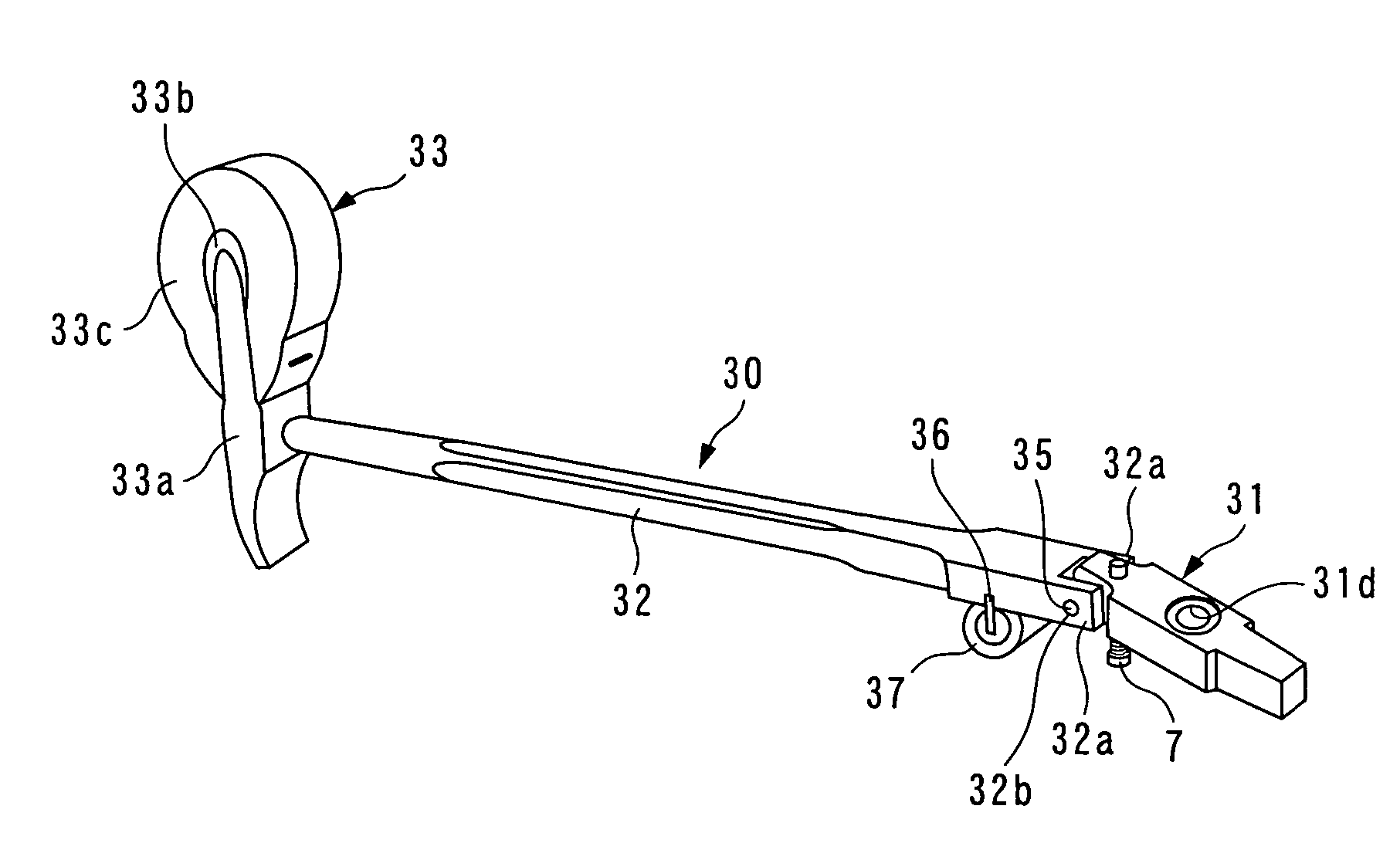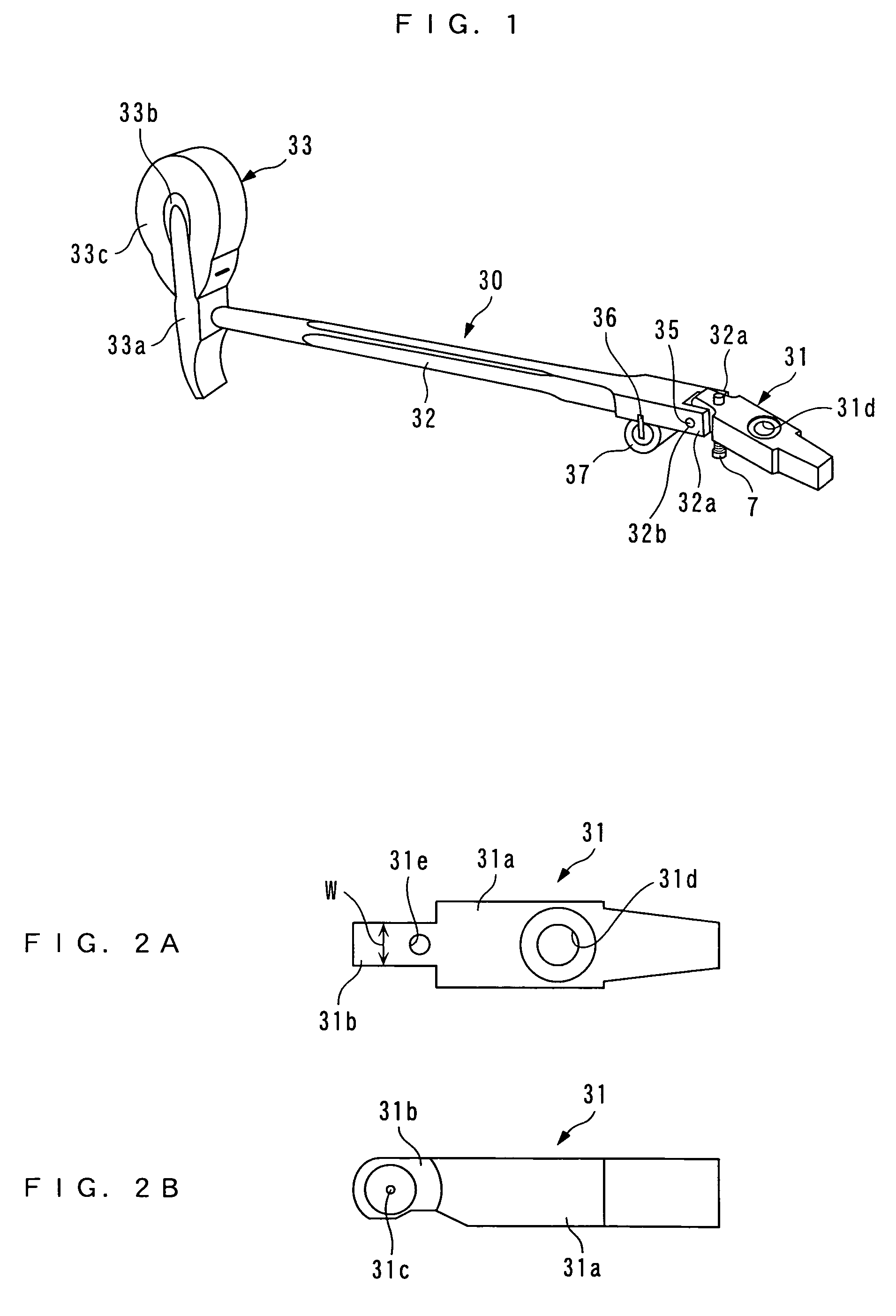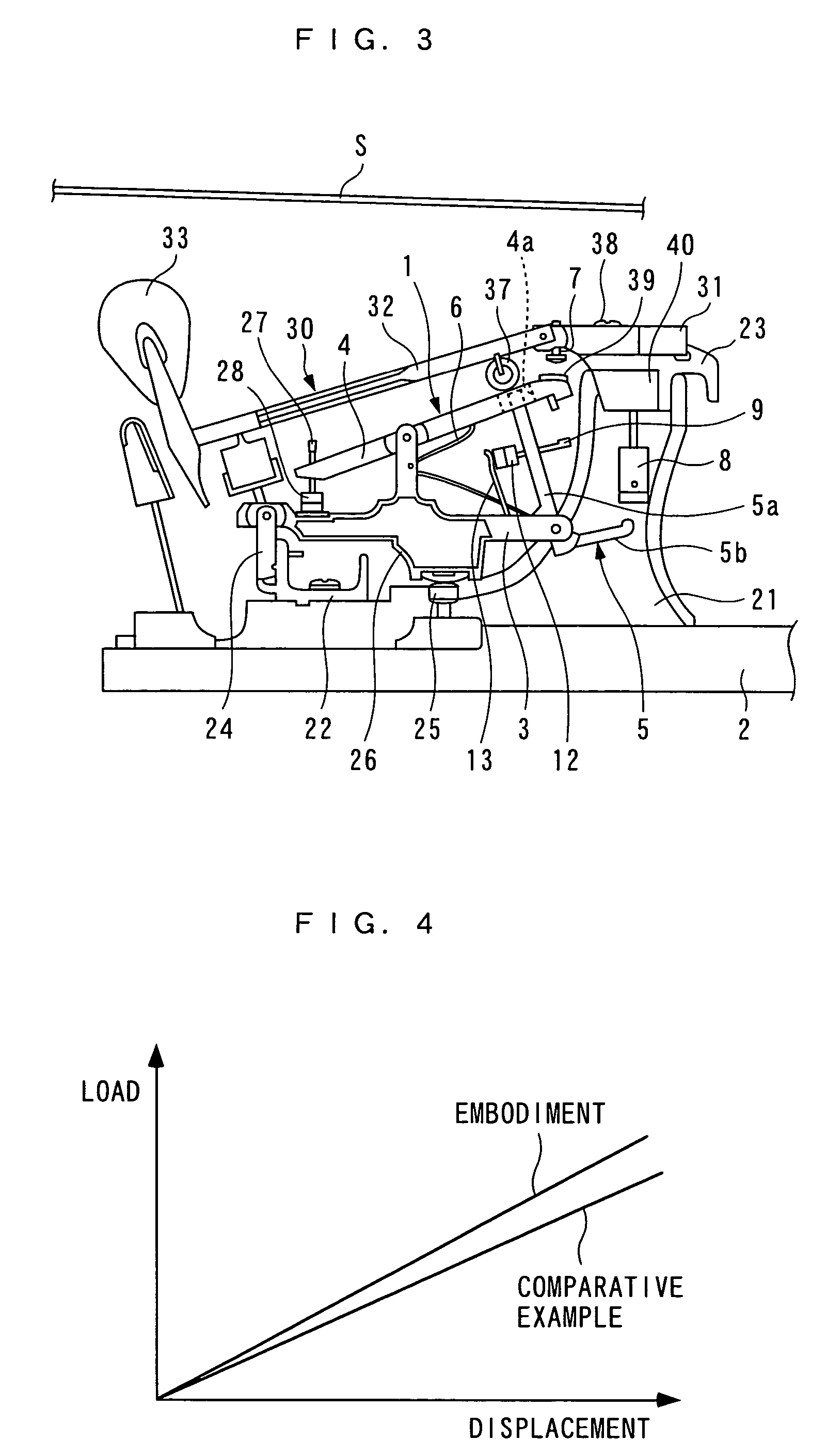Shank flange for piano
a flange and piano technology, applied in the field of flanges, can solve the problems of increasing the weight of the overall piano, defective action of the hammer, and varying rigidity and weight of the wood material, so as to prevent the charge thereon, prevent the effect of dust, and increase the electric conductivity
- Summary
- Abstract
- Description
- Claims
- Application Information
AI Technical Summary
Benefits of technology
Problems solved by technology
Method used
Image
Examples
Embodiment Construction
[0020]In the following, a preferred embodiment of the present invention will be described in detail with reference to the accompanying drawings. It should be first noted that the following description will be made on the assumption that the front side (on the right-hand side in FIG. 3), when a grand piano is viewed from a player, is defined as “front”; the far side (on the left-hand side in FIG. 3) is defined as “rear”; and a direction in which keys 2 are arranged side by side is defined as a “lateral direction.”
[0021]First, the structure of the hammer 30 and shank flange 31 in a grand piano, which has been outlined above, will be described in greater detail with reference to FIGS. 1, 2A and 2B. A multiplicity of hammers 30 and shank flanges 31 are arranged side by side in the lateral direction corresponding to keys 2 associated thereto. Each hammer 30 comprises a hammer shank 32, a hammer head 33 attached to the rear end of the hammer shank 32, and the like.
[0022]The hammer head 33...
PUM
 Login to View More
Login to View More Abstract
Description
Claims
Application Information
 Login to View More
Login to View More - R&D
- Intellectual Property
- Life Sciences
- Materials
- Tech Scout
- Unparalleled Data Quality
- Higher Quality Content
- 60% Fewer Hallucinations
Browse by: Latest US Patents, China's latest patents, Technical Efficacy Thesaurus, Application Domain, Technology Topic, Popular Technical Reports.
© 2025 PatSnap. All rights reserved.Legal|Privacy policy|Modern Slavery Act Transparency Statement|Sitemap|About US| Contact US: help@patsnap.com



